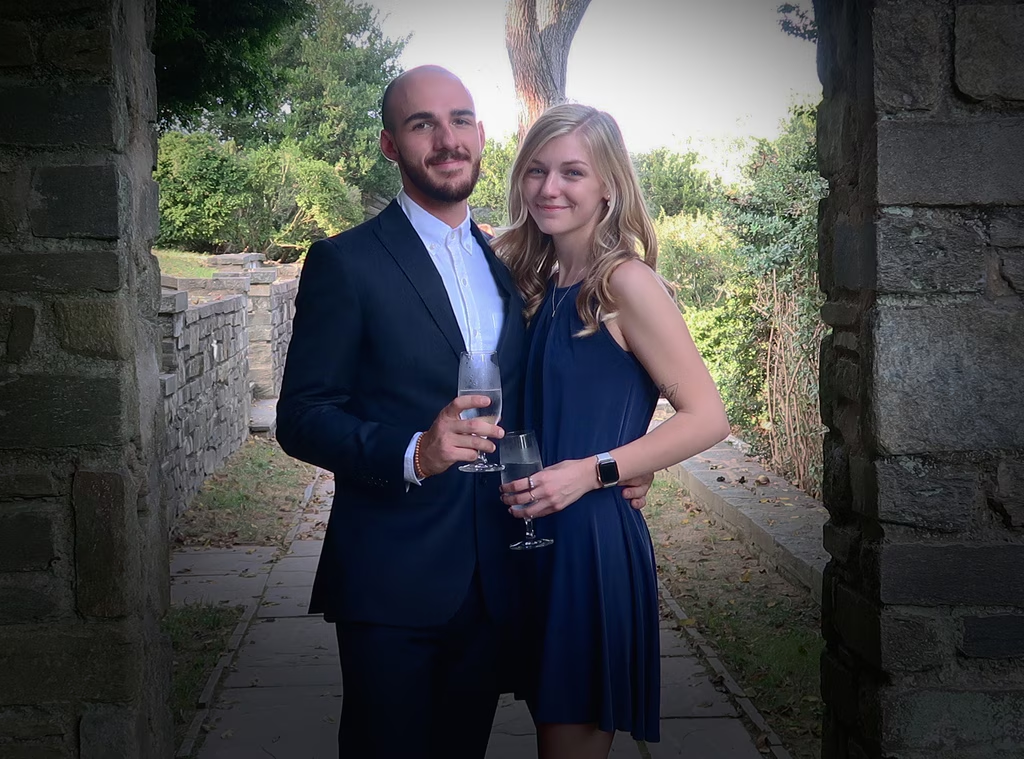The Netflix series American Murder: Gabby Petito, released on February 17, 2025, revisits the heartbreaking case that gripped the world. What happened in the final days of Gabby’s life? Through firsthand accounts from her loved ones, the series uncovers chilling details about her tragic murder and the unsettling events that followed. But beyond the headlines, the case raises deeper questions—about the power of social media in solving crimes, the failures of law enforcement, and Brian Laundrie’s final attempt to manipulate the truth. As the world revisits this case, it’s time to examine what we’ve learned and what still haunts us.
The Role of Social Media: Online Detectives and the #FindGabby Movement
When Gabby Petito was reported missing, the internet became an unexpected force in the search for answers. True crime enthusiasts, social media users, and amateur detectives on platforms like TikTok, Twitter, and Reddit dissected every available clue. The hashtag #FindGabby trended across social media, with thousands analyzing Gabby’s Instagram posts, YouTube videos, and even Brian Laundrie’s social media activity.
One of the biggest breakthroughs in the case came from a YouTube video posted by a travel vlogger couple. Their footage, recorded on August 27, unknowingly captured the white Ford Transit van Gabby and Brian had been traveling in, parked at the Spread Creek Dispersed Camping Area. This tip was instrumental in leading authorities to the location where Gabby’s remains were eventually found.
Social media users also pointed out inconsistencies in Gabby’s last Instagram post and questioned the eerie text messages sent from her phone. The August 30 message that referred to Gabby’s grandfather as “Stan” raised red flags, as it was not how she typically addressed him. This clue, first discussed by internet sleuths, added to the growing suspicion that Brian had taken control of Gabby’s phone to cover up her disappearance.

However, while social media played a key role in raising awareness, it also fueled conspiracy theories and misinformation. Some accused Brian’s parents of hiding him, while others speculated he had fled the country. The frenzied digital hunt also brought up ethical concerns: Should online communities act as investigators without proper training? While the internet was undeniably helpful in keeping Gabby’s case in the public eye, it also highlighted the dangers of armchair detective work gone too far.
The Police Response: Could Gabby Have Been Saved?
One of the most heartbreaking aspects of Gabby Petito’s case is the lingering question: Could she have been saved?
Just weeks before her death, on August 12, Gabby and Brian were stopped by Moab police in Utah following a 911 call from a witness who saw Brian physically attacking Gabby. Bodycam footage from that day revealed a distressed Gabby, in tears, telling officers that she and Brian had been arguing. However, instead of recognizing her as a potential victim, the officers seemed to treat her as the primary aggressor, largely due to her admission that she had hit Brian first.
While the couple was separated for the night—Brian was given a hotel room and Gabby kept the van—the police did not press charges or conduct a deeper investigation into the relationship’s potential danger. Looking back, many experts argue that the officers failed to recognize clear signs of domestic violence.
Gabby’s father, Joe Petito, expressed his frustration, saying, “They had a chance to protect my daughter, and they didn’t.” The encounter raised serious concerns about law enforcement’s handling of domestic violence cases, particularly when the victim appears emotional and the abuser remains calm and composed—an all-too-common dynamic in abusive relationships.
Also, Read – Exploring Our Fascination for True Crime Documentaries
In the aftermath of the case, Moab Police launched an internal investigation and acknowledged that their officers made “several unintentional mistakes.” The report concluded that Gabby should have been classified as a domestic violence victim and that intervention might have changed the course of events.
Gabby’s case reignited discussions about how police handle domestic violence reports and the need for better training to identify subtle but critical warning signs.
Brian Laundrie’s “Confession”: A Final Attempt to Control the Narrative?
Brian Laundrie’s remains were found on October 20, along with a notebook containing his written confession. In it, he claimed that Gabby had been injured, and he “ended her life” as an act of mercy. “I knew I couldn’t go on without her,” he wrote, portraying himself as a grieving lover rather than a murderer.
But Gabby’s family didn’t buy it.
Her stepfather, Jim Schmidt, was clear in his response: “Not one of the versions of Brian’s account was accurate by the findings of Gabby’s autopsy.” The autopsy revealed that Gabby had died of strangulation and blunt force trauma, contradicting Brian’s attempt to frame her death as a tragic accident.
Brian’s note wasn’t just a confession—it was an attempt to shape the story on his terms. It was his last opportunity to control the narrative, casting himself as a heartbroken man making an impossible choice rather than an abuser whose actions led to Gabby’s brutal death. His final message—asking people not to make life harder for his family—seemed more concerned with protecting his parents than expressing true remorse for what he had done.
The Laundries’ role in the aftermath remains controversial. They refused to speak to Gabby’s family or cooperate with police while their son was on the run. And then there was the infamous letter from Brian’s mother, Roberta, in which she wrote, “If you need to dispose of a body, I will show up with a shovel and garbage bags.” Although she later claimed the letter was written long before Gabby’s death, it fueled speculation that the Laundries knew more than they let on.
Even in death, Brian tried to control the story. But the facts, as determined by investigators, spoke louder than his final words.
Gabby Petito’s case was shaped by a mix of modern technology, law enforcement failures, and an abuser’s desperate attempt to rewrite history. The #FindGabby movement proved that social media can be a powerful tool for justice—but also a chaotic one. The police’s missteps highlighted the need for better training in handling domestic violence cases. And Brian Laundrie’s so-called confession was less about the truth and more about maintaining control, even after his own death.
In the end, Gabby’s story is more than a true crime mystery—it’s a call to action. It’s a reminder to take domestic violence seriously, to hold law enforcement accountable, and to ensure that no victim’s voice is ever silenced again.
Source: E! Online






